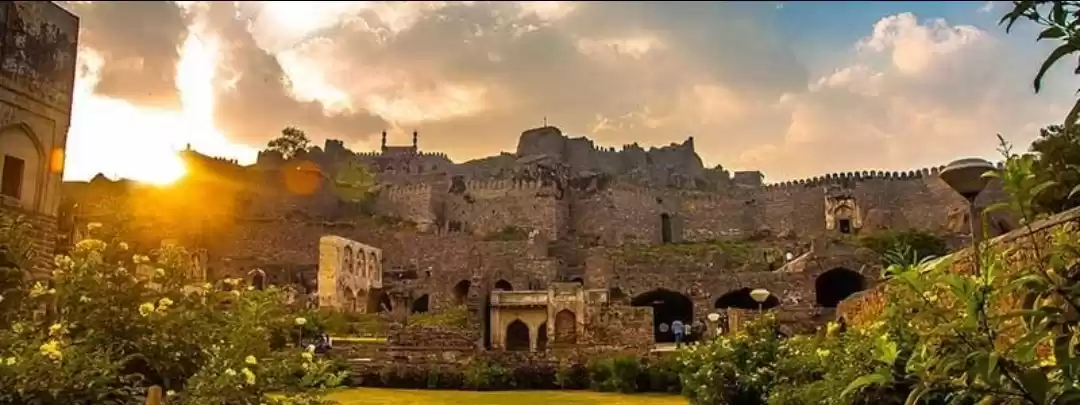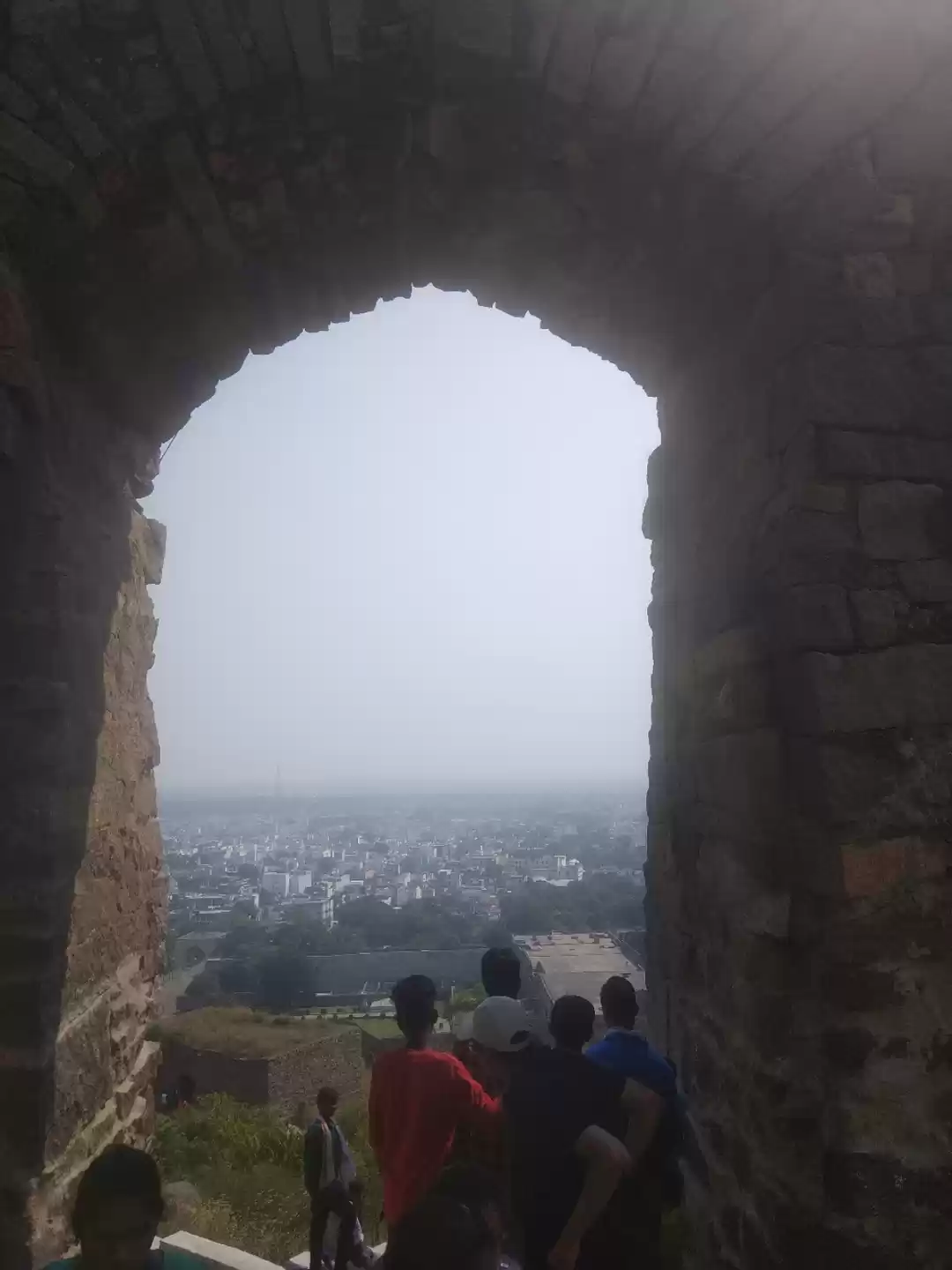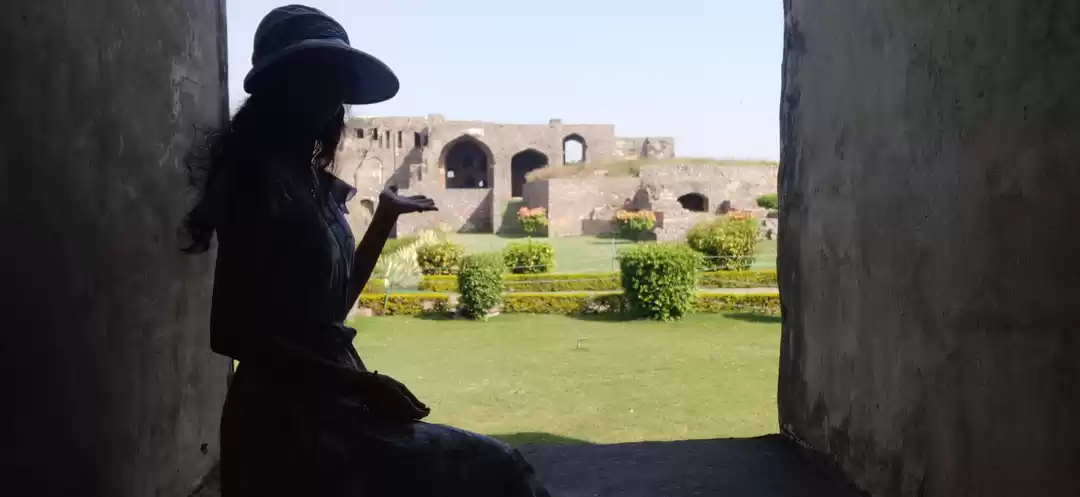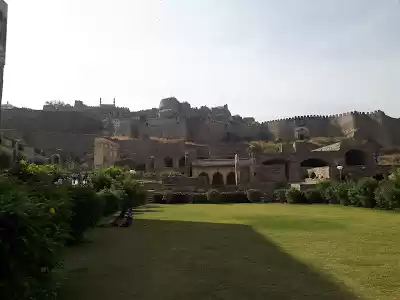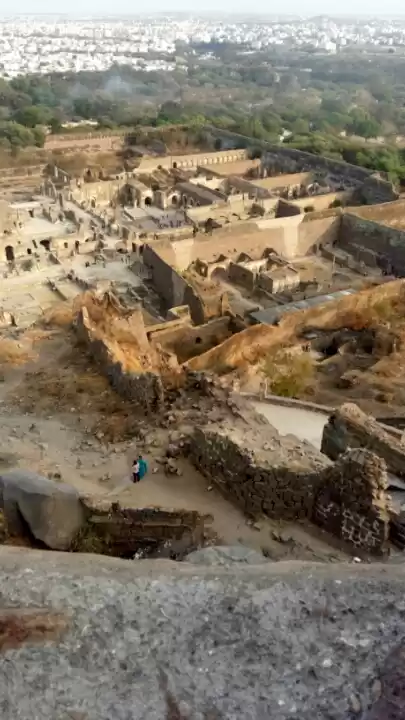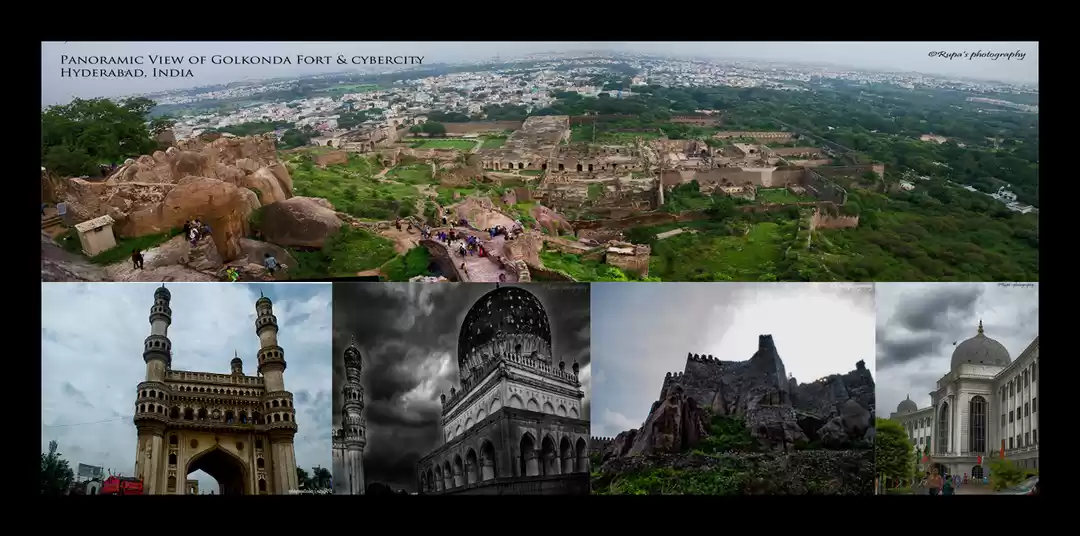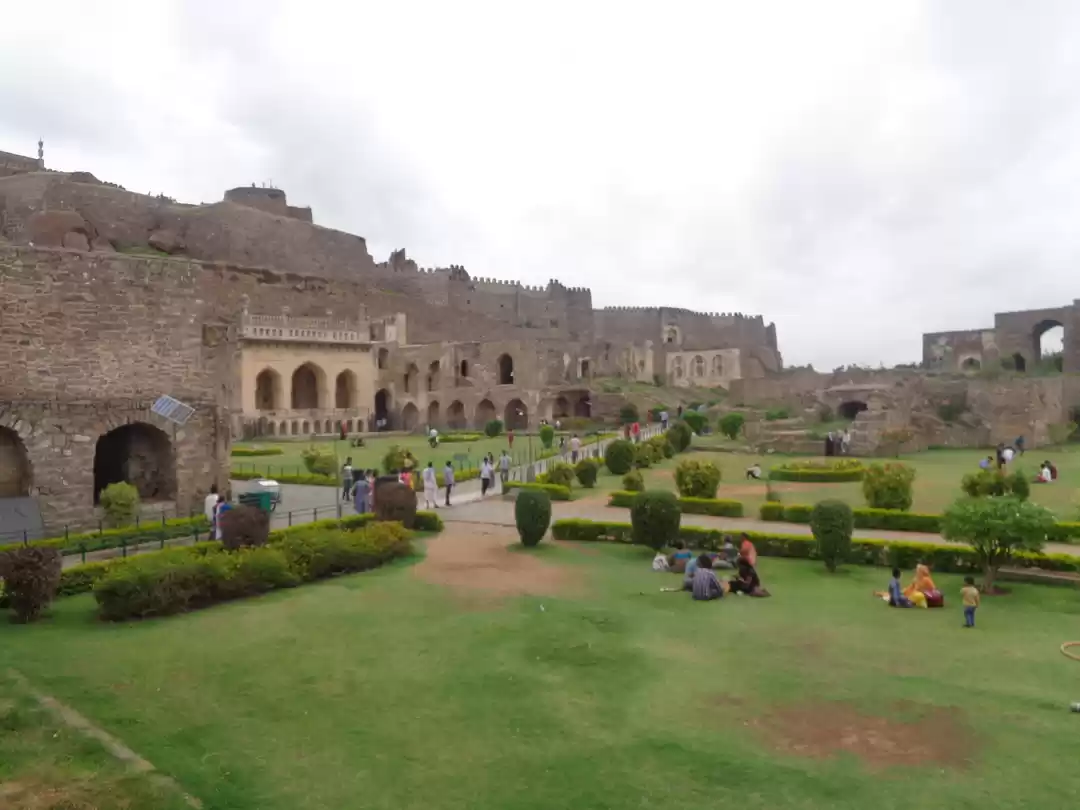






Golconda, also known as Golkonda or Golla konda ("shepherd's hill"), a fort of Southern India and capital of the medieval sultanate of the Qutb Shahi dynasty (c.1518–1687), is situated 11 kilometres (6.8 mi) west of Hyderabad. It is also a tehsil of Hyderabad district, Telangana, India. The region is known for the mines that have produced some of the world's most famous gems, including the Koh-i-Noor, the Hope Diamond and the Nassak Diamond.
Golconda Fort was first built by the Kakatiya dynasty as part of their western defenses along the lines of the Kondapalli Fort. The city and fortress are built on a granite hill that is 120 meters (480 ft) high and is surrounded by massive battlements. The fort was rebuilt and strengthened by Pratapa Rudra of the Kakatiyas.The fort was further strengthened by the Musunuri Nayaks, who defeated the Tughlaqi army occupying Warangal. The fort was ceded by the Musunuri chief, Kapaya Nayak, to the Bahmani Sultanate as part of the treaty in 1364. The fort became the capital of a major province in the sultanate and, after its collapse, the capital of the Qutb Shahi dynasty.The fort finally fell into ruins after a siege and its fall to the Mughal Empire under Aurangzeb in 1687.
After the collapse of the Bahmani Sultanate, Golkonda rose to prominence as the seat of the Qutb Shahi dynasty around 1507. Over a period of 62 years, the mud fort was expanded by the first three Qutb Shahi sultans into a massive fortification of granite, extending around 5 km in circumference. It remained the capital of the Qutb Shahi dynasty until 1590 when the capital was shifted to Hyderabad. The Qutb Shahis expanded the fort, whose 7 kilometres (4.3 mi) outer wall enclosed the city. The state became a focal point for Shia Islam in India. For instance, in the 17th century, the Bahraini clerics Jaʿfar ibn Kamal al-Din and Salih Al-Karzakani both emigrated to Golkonda.
The Golkonda Fort used to have a vault where once the famous Koh-i-Noor and Hope diamonds were stored along with other diamonds.
Golconda is renowned for the diamonds found on the south-east at Kollur Mine near Kollur, Guntur district, Paritala and Atkur in Krishna district and cut in the city during the Kakatiya reign. At that time, India had the only known diamond mines in the world. Golkonda's mines yielded many diamonds. Golkonda was the market city of the diamond trade, and gems sold there came from a number of mines. The fortress-city within the walls was famous for diamond trade. However, Europeans believed that diamonds were found only in the fabled Golkonda mines. Magnificent diamonds were taken from the mines in the region surrounding Golkonda, including the Daria-i-Noor or "Sea of Light", at 185 carats (37.0 g), the largest and finest diamond of the crown jewels of Iran.
Its name has taken a generic meaning and has come to be associated with great wealth. Gemologists use this classification to denote a diamond with a complete (or almost-complete) lack of nitrogen; "Golconda" material is also referred to as "2A".
Many famed diamonds are believed to have been excavated from the mines of Golkonda, such as:
- Daria-i-Noor
- Noor-ul-Ain
- Koh-i-Noor
- Hope Diamond
- Princie Diamond
- Regent Diamond
- Wittelsbach-Graff Diamond
Source: Wikipedia
Frequent Searches Leading To This Page:-
golconda fort andhra pradesh, golconda fort to jubilee hills, a visit to golconda fort, golconda fort near tourist places, golconda fort of hyderabad, golconda fort telangana
















